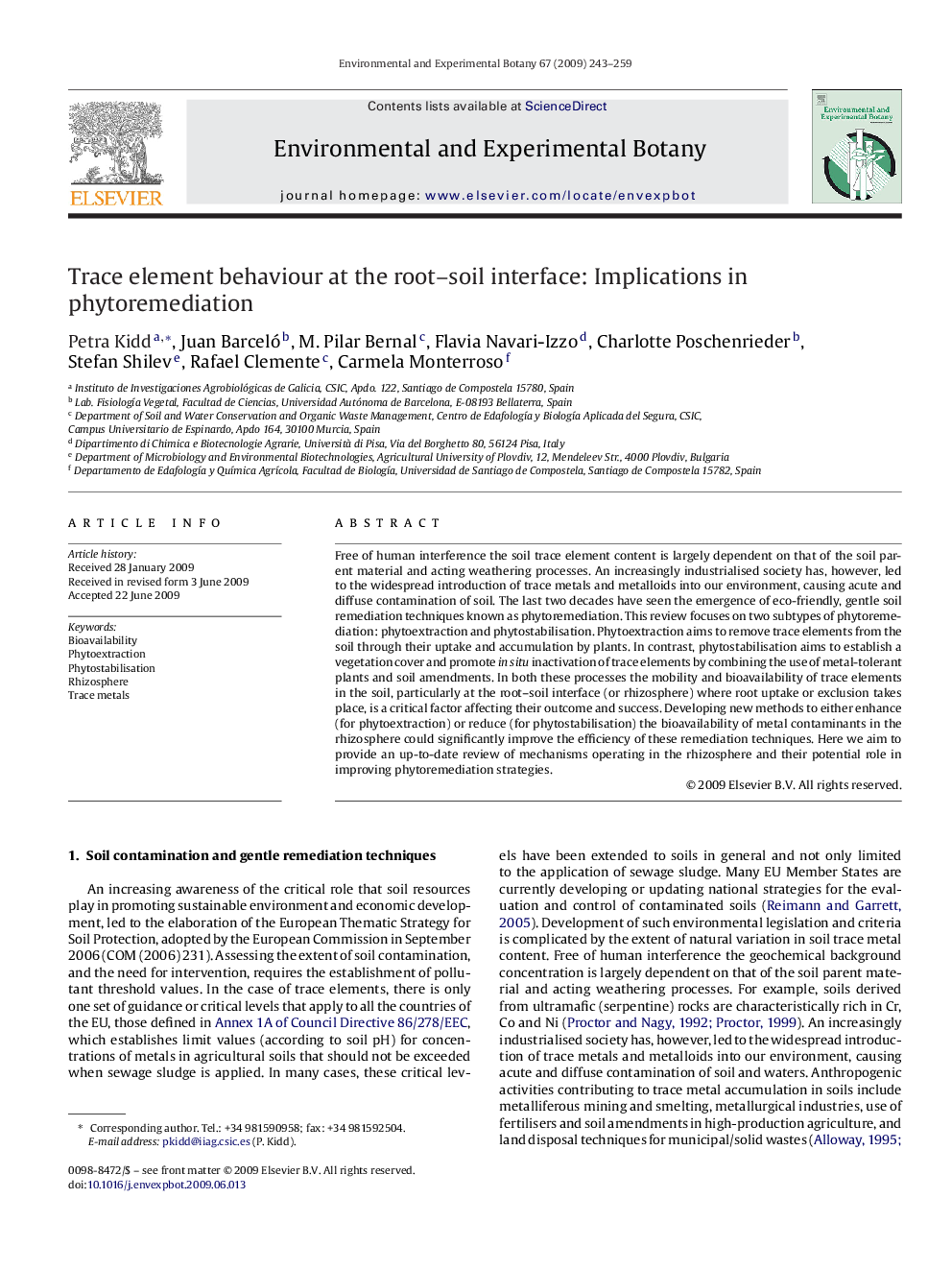| کد مقاله | کد نشریه | سال انتشار | مقاله انگلیسی | نسخه تمام متن |
|---|---|---|---|---|
| 4555058 | 1329241 | 2009 | 17 صفحه PDF | دانلود رایگان |

Free of human interference the soil trace element content is largely dependent on that of the soil parent material and acting weathering processes. An increasingly industrialised society has, however, led to the widespread introduction of trace metals and metalloids into our environment, causing acute and diffuse contamination of soil. The last two decades have seen the emergence of eco-friendly, gentle soil remediation techniques known as phytoremediation. This review focuses on two subtypes of phytoremediation: phytoextraction and phytostabilisation. Phytoextraction aims to remove trace elements from the soil through their uptake and accumulation by plants. In contrast, phytostabilisation aims to establish a vegetation cover and promote in situ inactivation of trace elements by combining the use of metal-tolerant plants and soil amendments. In both these processes the mobility and bioavailability of trace elements in the soil, particularly at the root–soil interface (or rhizosphere) where root uptake or exclusion takes place, is a critical factor affecting their outcome and success. Developing new methods to either enhance (for phytoextraction) or reduce (for phytostabilisation) the bioavailability of metal contaminants in the rhizosphere could significantly improve the efficiency of these remediation techniques. Here we aim to provide an up-to-date review of mechanisms operating in the rhizosphere and their potential role in improving phytoremediation strategies.
Journal: Environmental and Experimental Botany - Volume 67, Issue 1, November 2009, Pages 243–259